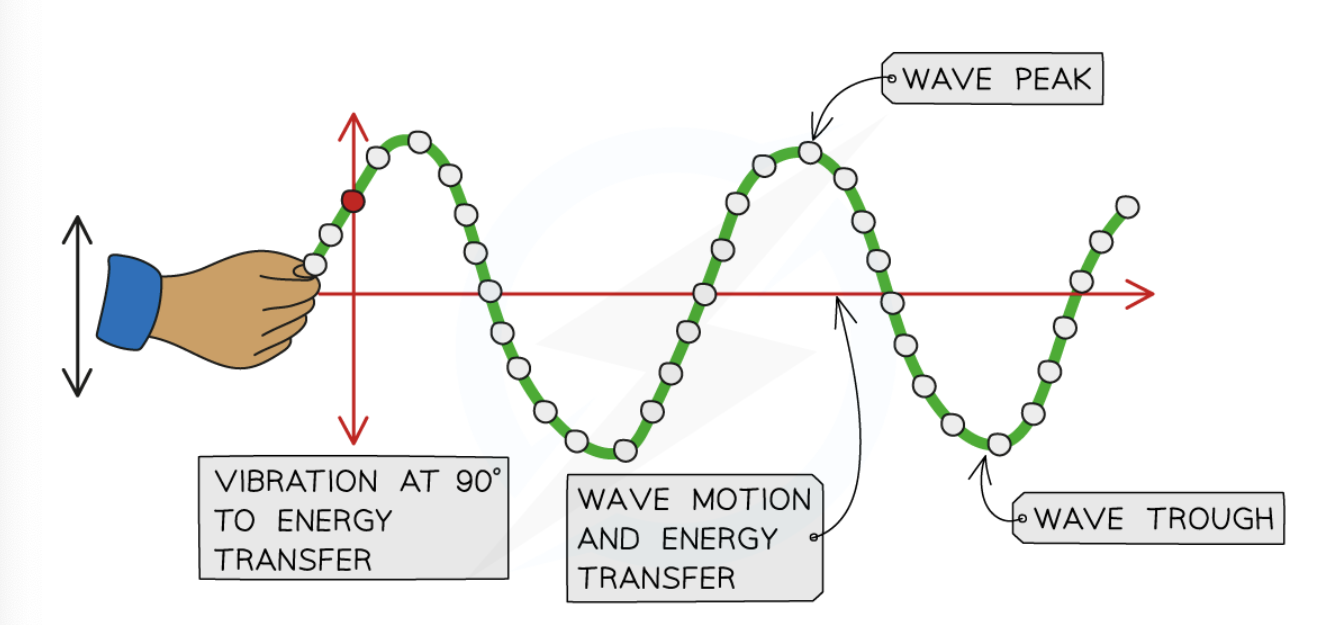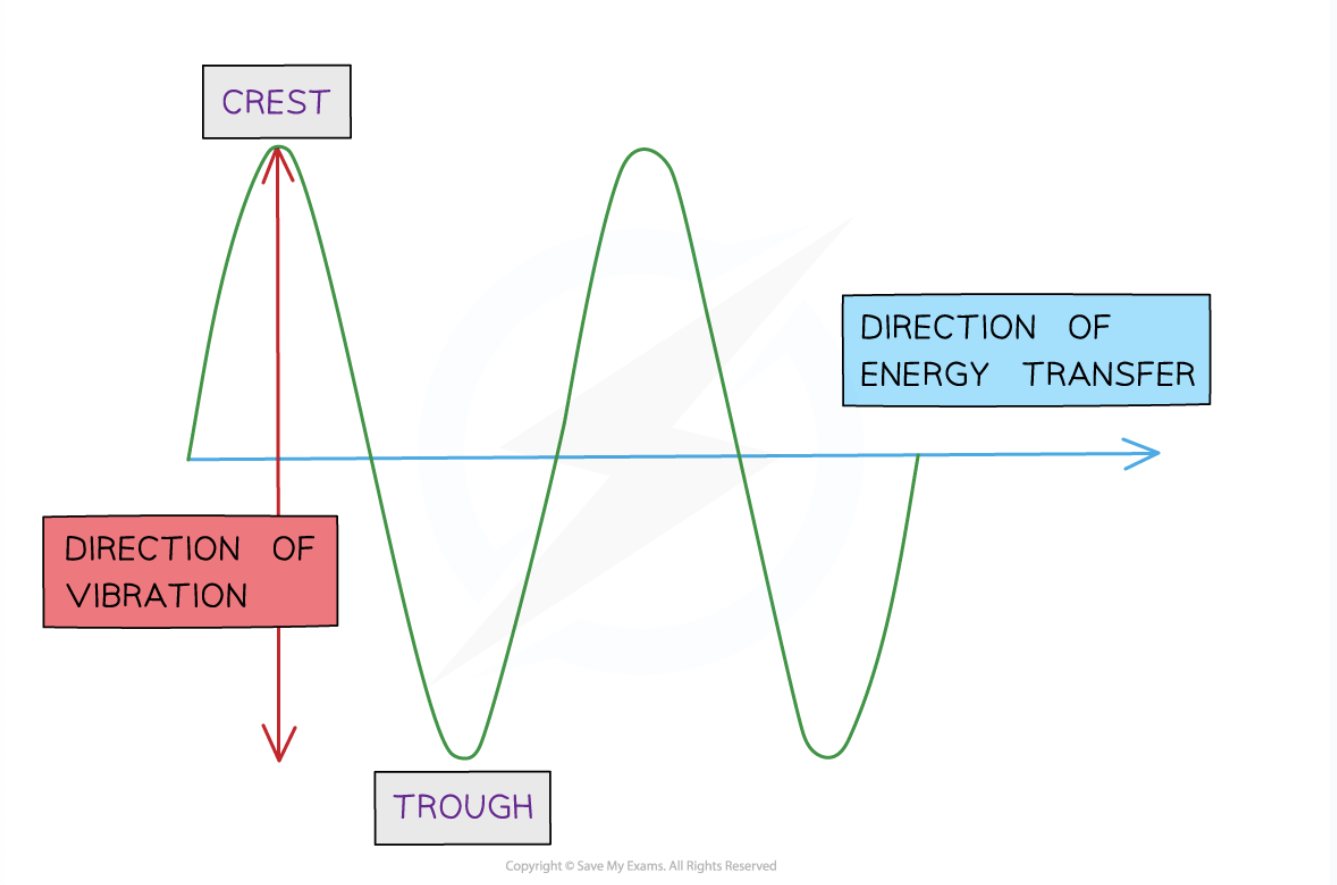transverse waves
1/7
There's no tags or description
Looks like no tags are added yet.
Name | Mastery | Learn | Test | Matching | Spaced |
|---|
No study sessions yet.
8 Terms
Transverse waves are defined as:
Waves where the points along its length vibrate at 90 degrees to the direction of energy transfer
What direction is the energy transfer in relation to wave motion in transverse waves?
The energy transfer is perpendicular to wave motion
what do transverse waves transfer?
They transfer energy, but not the particles of the medium
In what can transverse waves move? What can electromagnetic waves(transverse) waves move in
They can move in solids and on the surfaces of liquids but not inside liquids or gases
Some transverse waves (electromagnetic waves) can move in solids, liquids and gases and in a vacuum
what is the point on the wave that is the highest above the rest position called?
peak or crest
what is the point on the wave that is the lowest below the rest position called?
trough
examples of transverse waves?
Ripples on the surface of water
Vibrations in a guitar string
S-waves (a type of seismic wave)
Electromagnetic waves (such as radio, light, X-rays etc)

how are transverse waves drawn?
Transverse waves are drawn as a single continuous line, usually with a central line showing the undisturbed position
The curves are drawn so that they are perpendicular to the direction of energy transfer
